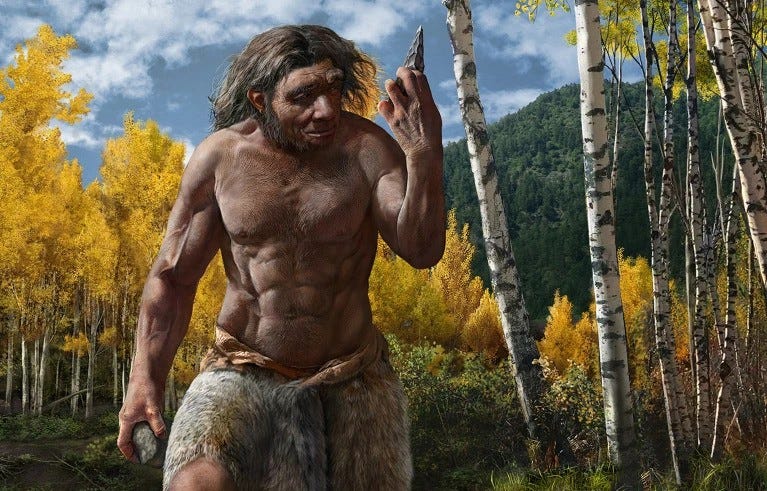💀 We finally know what Denisovans looked like!
Hey folks! Turns out Dragon Man and Denisovans were the same species after all. One ancient mystery solved, more to go!
Fifteen years ago, scientists met our ancient cousin: a Denisovan, a previously unknown member of the human family tree. Since then, over a dozen individuals have been identified—from teeth, finger bones, and jaw fragments—but not a single skull. Which meant we had no idea what a Denisovan looked like. Until now. Or rather, until 2018. Or until 1933. Let’s untangle this complex timeline.
In 2010, researchers analysed a pinkie bone dug up in the Denisova Cave in Siberia two years earlier. It turned out to belong to a teenage girl from an entirely new human group. The race to find more Denisovan remains had begun.
For the next nine years, Denisova Cave remained the only confirmed source of Denisovan fossils—some freshly unearthed, others rediscovered in storage from digs in the 1980s. In 2019, a new piece of the puzzle emerged: a jawbone found by a monk in Tibet back in 1980. Then came Denisovan fossils from Taiwan and Laos.
Clearly, Denisovans were a well-travelled bunch, roaming Asia from around 285,000 to 25,000 years ago. Oddly enough, as many new fossils turned up in museum collections as in caves. Still no skull, though. Bummer.
Meanwhile, in 2018, a Chinese palaeoanthropologist was handed a skull by a man with a curious story. According to the official version, his grandfather discovered it on a building site in Harbin in 1933, then hid it in a well for decades and mentioned it only on his deathbed. The family eventually retrieved the skull and gave it to a university. In 2021, the researchers who examined it said the “Dragon Man” fossil represented a new archaic human species, which they named Homo longi. If you think this sounds too much like a fairy tale, you’re not alone. Scientists suspect the skull was found recently, and the 1933 grandfather was invented to avoid trouble for not reporting it to the authorities.
But what does this skull with a complicated family history have to do with Denisovans, you may ask? A geneticist who worked on the first Denisovan DNA from the Siberian finger bone contacted the Homo longi team and analysed ancient proteins from the skull. One protein sequence matched samples from Denisovans found in Siberia, Tibet and Taiwan—but not modern humans or Neanderthals. That suggested Dragon Man was indeed Denisovan.
To double-check, the team looked at a tiny chip of calcified plaque from the teeth. Among the bacterial DNA, they found traces from the host. The mitochondrial DNA sequence was closest to early Denisovans from Siberia, dated between 187,000 and 217,000 years ago.
So, what does this tell us about Denisovans? They had a large brain and a prominent brow ridge—at least, the one individual we’ve got.
There’s still some debate about what to call the group that includes the Harbin skull and the girl from Denisova. Some argue Homo longi is the right name. Others say they should be called Denisovans, since they could interbreed with our own ancestors—just like Neanderthals—and that makes them Homo sapiens too.
More importantly, we now have a Denisovan skull! And that means researchers can finally start matching other fossils from their collections, even when no DNA or proteins survive.
And that’s it for today! Thanks for reading! If you enjoy the newsletter, share it with a friend—or a dozen. And if you really enjoyed it, consider upgrading to a paid subscription—it helps support my work and means a lot.
Elia Kabanov is a science writer covering the past, present and future of technology (@metkere)
Cover art: Elia Kabanov feat. DALL-E. Illustrations: Chuang Zhao. Animation: Xijun Ni.







